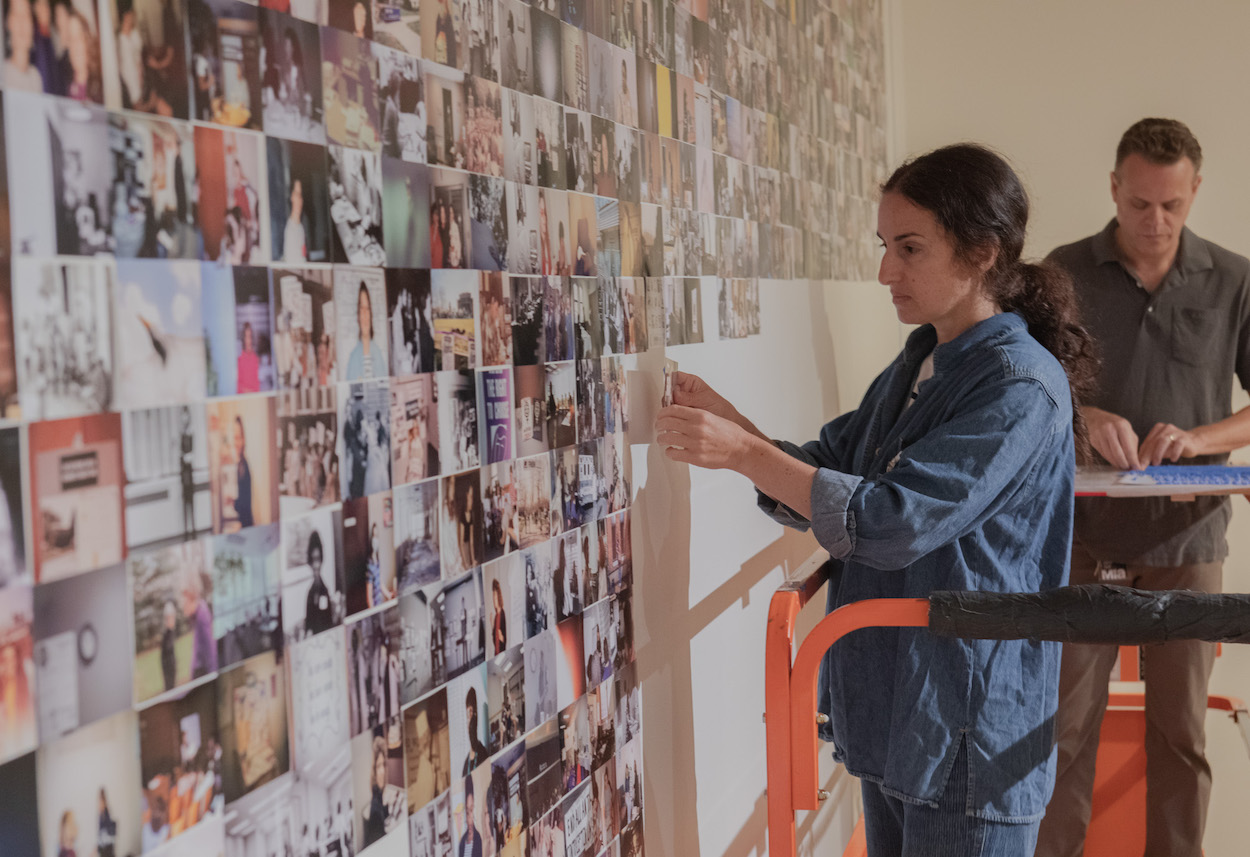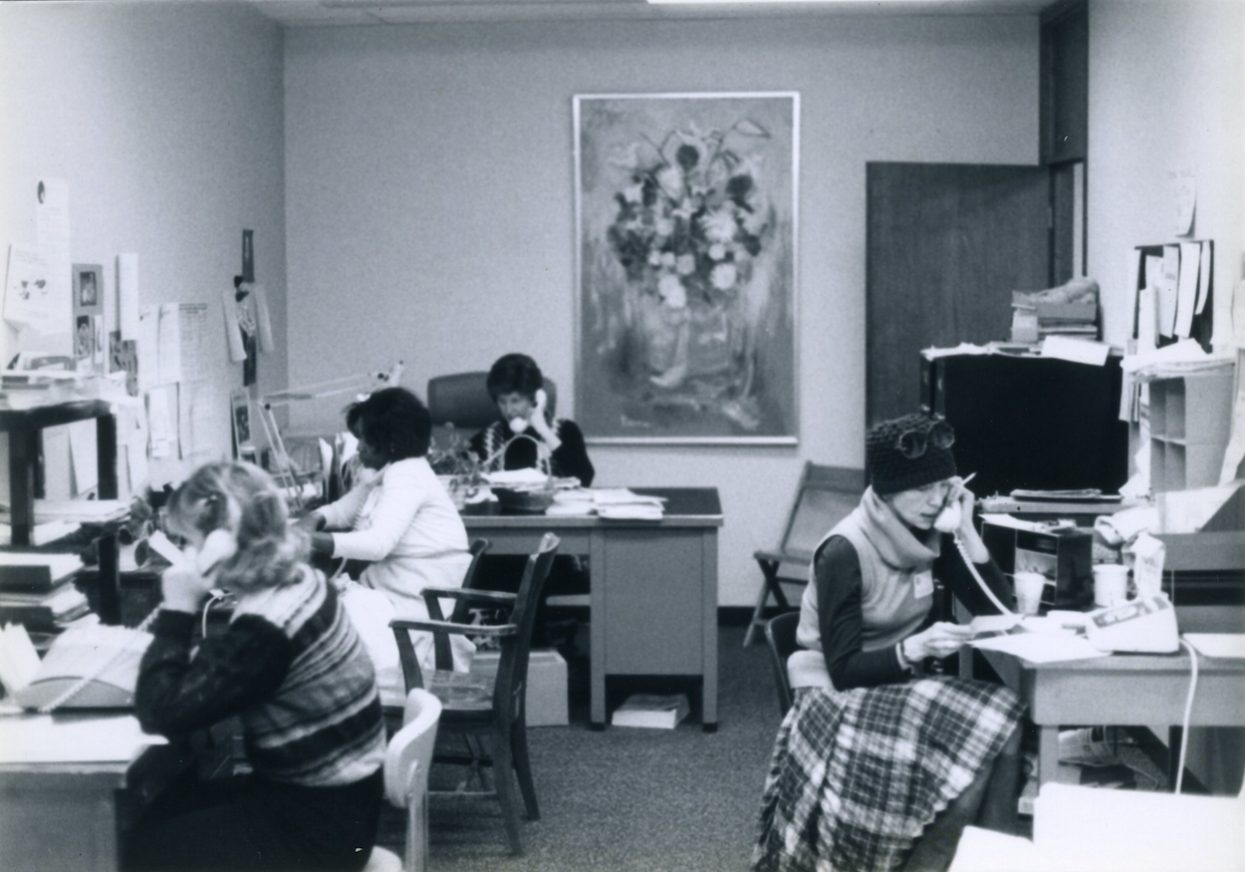The work of Carmen Winant gathers together strategies of photography, archiving, assemblage, and installation art; of recollecting, recommending, revising; of place-making both in the sense of a room of one’s own and a seat at the table. In her 2018 Museum of Modern Art opus “My Birth,” Winant transformed gallery walls into uterine walls, cloaking them with some 2,000 images of people delivering each other. Since then, of course, the Supreme Court removed the right to reproductive health from the constitution, which has led to the shuttering of abortion and other healthcare clinics across the country.
In her new show “The Last Safe Abortion,” Winant transforms the Minneapolis Institute of Art’s Perlman Gallery into a kind of family photo album of caregivers. Photographic prints at the scale of snapshots fill a floor-to-ceiling grid at one end. Two walls hug this installation. One offers a towering corkboard of photographs, the material linking to forms of inter-office comms. It emphasizes that while reproductive healthcare might be a calling for some, it was—it is—also a profession.
“Reproductive rights have been whittled away for decades, and long preceding the recent Dobbs decision,” Winant says. “Creating a stigma around this procedure, which one in four women in this country receive, has been a deliberate tool in that attack. For years, I’ve wanted to develop a project that contends with the normalcy of these healthcare services by offering up a multitude of images that demonstrate its ordinary processes and procedures.”
The second wall beckons with enclosed display cases of further photographs and archival materials Winant sourced from the collections of newspapers, universities, women’s archives and, most importantly, abortion and health care clinics throughout the American Midwest. And new photographs taken for the exhibition document the labor involved in helping people decide whether or not they will go into labor. “This installation is indebted to the people who do this work, for sharing their photographic material with me,” Winant says, “but also for opening their doors to allow me to photograph in those same spaces.”
“Part of Winant’s practice is really going into archives to think deeply about women’s history,” says Casey Riley, the Institute’s Chair of Global Contemporary Art and Curator of Photography and New Media. “She thinks not only about the voices and experiences that archives can hold, but also the material echoes.” These ripple out in images of healthcare workers scheduling appointments, offering sex ed classes, moving through their workdays. “This show is thinking about civil rights, about the individual and society. And also, at the same time, our obligations to one another, what it means to create spaces where we can ensure that people are seen and heard and understood and cared for.” This work goes on.
“Carmen Winant: The Last Safe Abortion” is on view at the Minneapolis Institute of Art (2400 3rd Ave S, Minneapolis) until Dec. 31.


